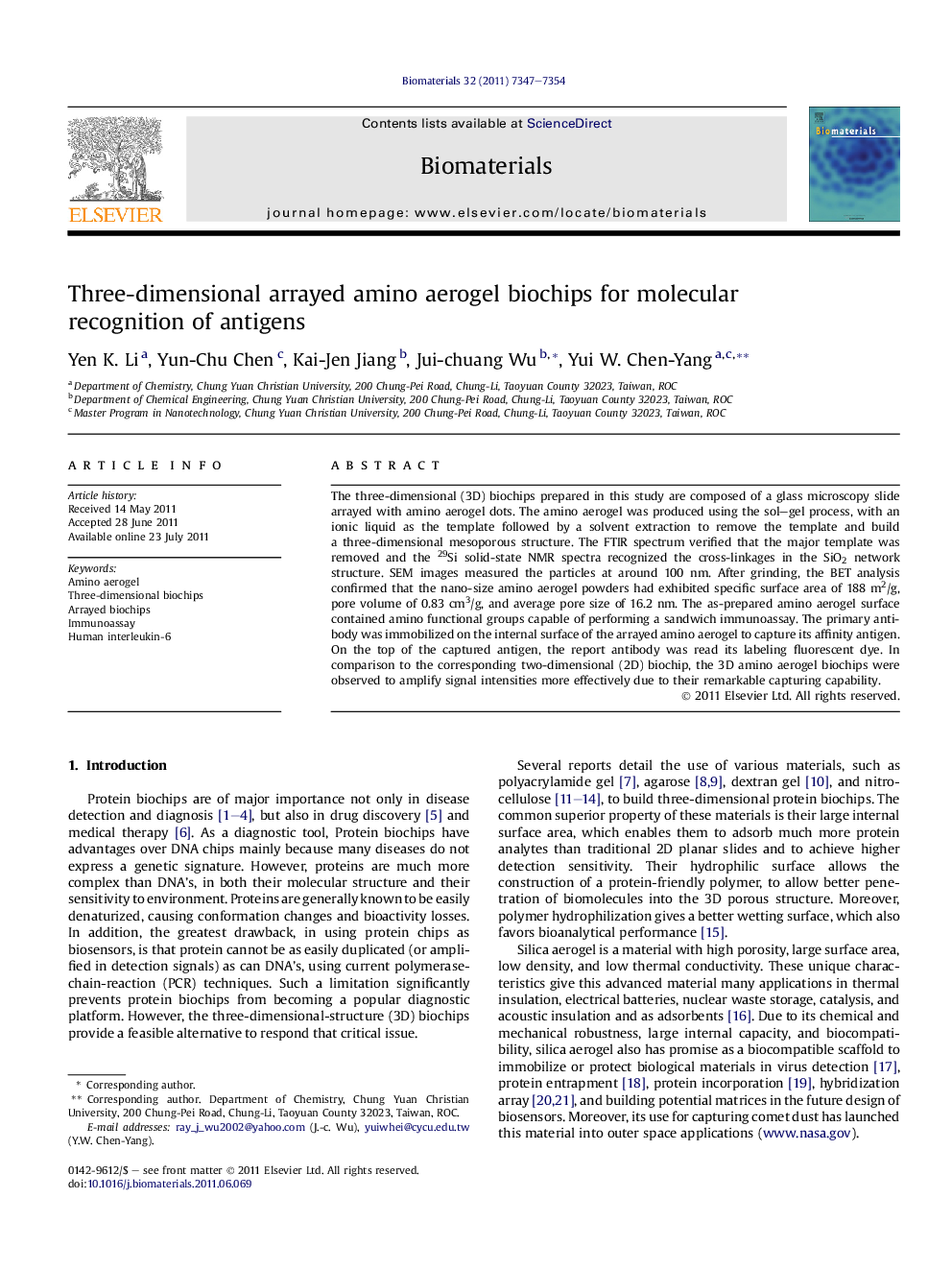| Article ID | Journal | Published Year | Pages | File Type |
|---|---|---|---|---|
| 10229690 | Biomaterials | 2011 | 8 Pages |
Abstract
The three-dimensional (3D) biochips prepared in this study are composed of a glass microscopy slide arrayed with amino aerogel dots. The amino aerogel was produced using the sol-gel process, with an ionic liquid as the template followed by a solvent extraction to remove the template and build a three-dimensional mesoporous structure. The FTIR spectrum verified that the major template was removed and the 29Si solid-state NMR spectra recognized the cross-linkages in the SiO2 network structure. SEM images measured the particles at around 100Â nm. After grinding, the BET analysis confirmed that the nano-size amino aerogel powders had exhibited specific surface area of 188Â m2/g, pore volume of 0.83Â cm3/g, and average pore size of 16.2Â nm. The as-prepared amino aerogel surface contained amino functional groups capable of performing a sandwich immunoassay. The primary antibody was immobilized on the internal surface of the arrayed amino aerogel to capture its affinity antigen. On the top of the captured antigen, the report antibody was read its labeling fluorescent dye. In comparison to the corresponding two-dimensional (2D) biochip, the 3D amino aerogel biochips were observed to amplify signal intensities more effectively due to their remarkable capturing capability.
Keywords
Related Topics
Physical Sciences and Engineering
Chemical Engineering
Bioengineering
Authors
Yen K. Li, Yun-Chu Chen, Kai-Jen Jiang, Jui-chuang Wu, Yui W. Chen-Yang,
